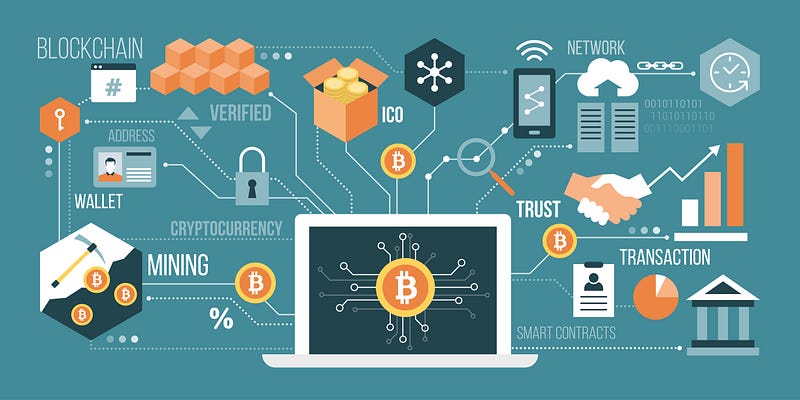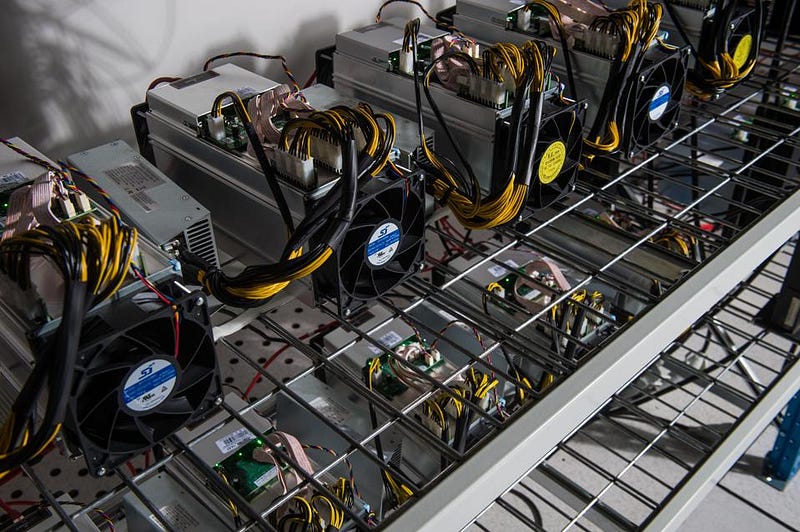Unlocking the Secrets of Bitcoin Mining: A Comprehensive Guide
Written on
Chapter 1: Understanding Bitcoin Mining
Bitcoin stands as the foremost cryptocurrency, valued at nearly $60,000 per coin as of this writing. While new coins are mined daily and their value continues to rise, the idea that mining Bitcoin is a surefire path to instant wealth is misleading. Although anyone can engage in Bitcoin mining, it often requires significant investment in both time and costly hardware due to the intense competition in the field. If you're curious about this process or considering venturing into mining yourself, this guide will illuminate how Bitcoin is created and how enthusiasts around the globe are racing to extract this digital treasure.
Where Do Bitcoins Originate?
To grasp how Bitcoins are produced, it's essential to comprehend the Blockchain system, which underpins Bitcoin transactions. Blockchain operates as a decentralized network that serves as the backbone for Bitcoin, facilitating all transactions. When a transaction request is made, independent servers—known as Bitcoin miners—must solve a complex algorithmic password. Successfully cracking this password allows the server to host the transaction, subsequently updating the blockchain ledger. Upon completion, the server owner receives Bitcoin and a transaction fee as rewards. This incentivization is crucial for maintaining the blockchain's efficiency and reliability.

How Are Bitcoins Mined?
The algorithm responsible for generating transaction passwords in the blockchain is called the "SHA-256 Hash Algorithm." This algorithm produces a seemingly 'random' password made up of numbers, letters, and symbols. The only method to decipher this password is through sheer trial and error—computers must generate countless combinations at lightning speed until the correct password is found. It may seem logical that more powerful computers would crack these codes faster, but this is not the case. The Bitcoin protocol was designed so that as computational power increases, the complexity of the password also rises. This mechanism ensures that Bitcoin is mined at a steady rate (approximately one every 10 minutes) and prevents inflation that could occur if a supercomputer were to dominate the mining process.

Despite the challenges, many companies invest in large-scale mining operations equipped with state-of-the-art technology. This investment is aimed at optimizing the hash rate for coin generation. Typically, these large mining ventures involve groups of individuals pooling resources to increase efficiency, with Bitcoin rewards distributed among the contributors. Currently, China is the leading producer of Bitcoin, accounting for nearly 70% of new coins, followed by Iceland at around 12%. While these mining hubs exist geographically, the decentralized nature of the blockchain protects transactions from governmental control, ensuring that no single entity, including China, can monopolize Bitcoin. Anyone can participate in Bitcoin mining from virtually anywhere in the world, provided they have the necessary funds and resilience to navigate potential market fluctuations.
If you found this information helpful, you might also enjoy my article, "Why Blockchain is the Future of Digital Trading (Cryptocurrency)," where I explore blockchain's potential to transform the digital marketplace and its growth alongside Bitcoin and other cryptocurrencies.
Chapter 2: Video Insights into Bitcoin Mining
This video, "What is Bitcoin Mining? (In Plain English)," provides an accessible overview of the Bitcoin mining process, breaking down complex concepts for viewers of all backgrounds.
In "Cryptocurrency Mining For Dummies - FULL Explanation," viewers receive a detailed explanation of cryptocurrency mining, including practical tips for beginners and insights into the mining landscape.